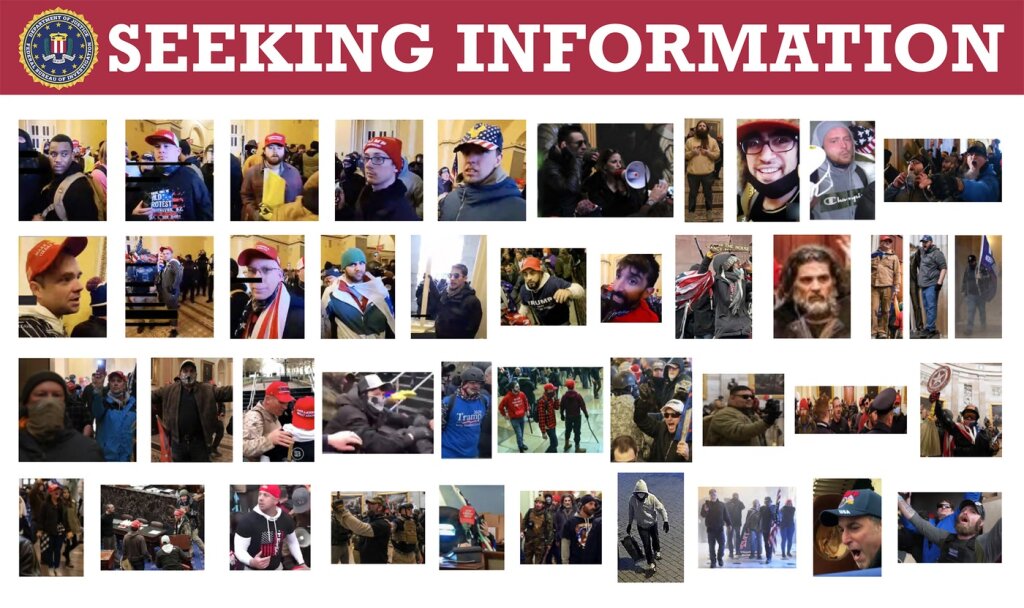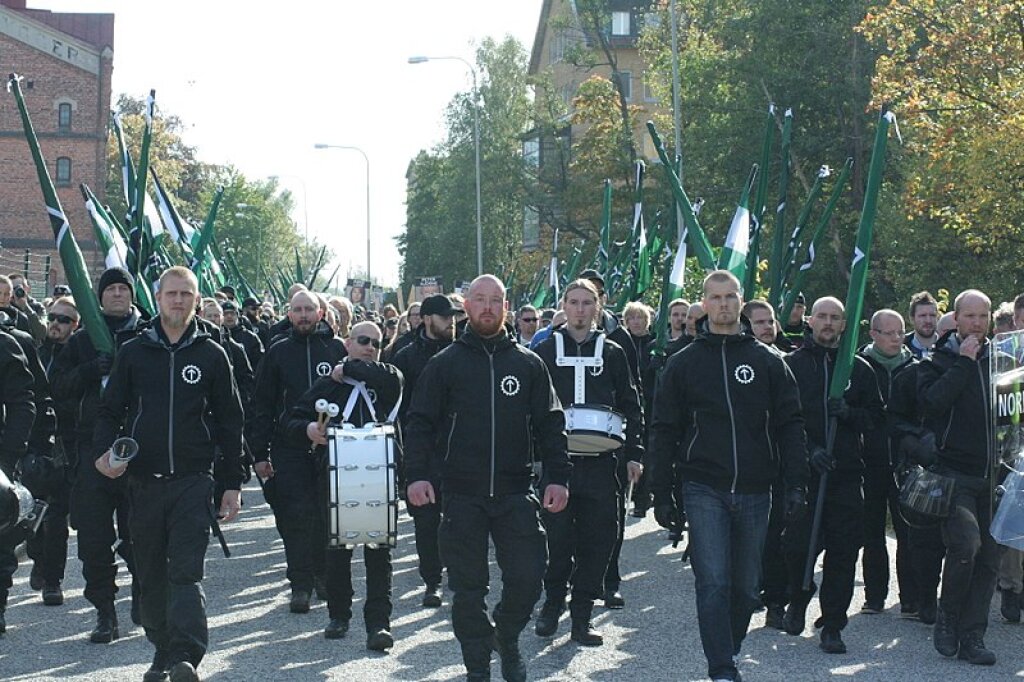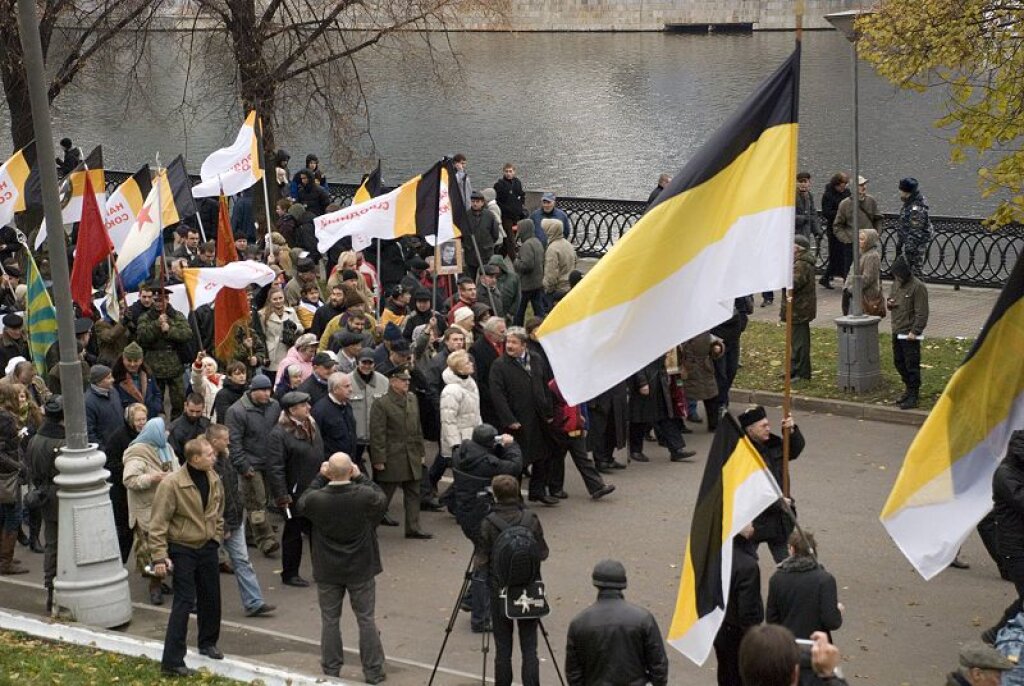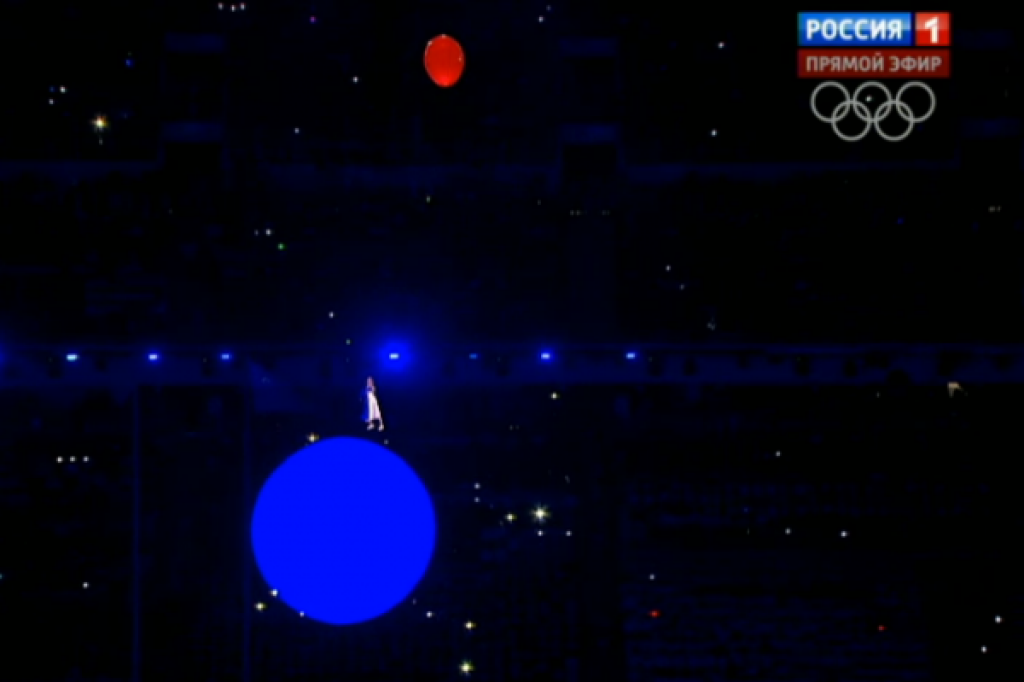Brianna Philpot is a graduate of NYU's program in Russian & Slavic Studies and International Relations. She is Editorial Assistant for All the Russias.
This is Part III of a three-part series. Part I may be found here and Part II here.
Part III: Extremist Groups
QAnon incorporated ideas and prejudices that were already popular among the far-right fringe “into a semi-coherent mythos” in an increasingly common online process of radicalization. Sparsely moderated platforms that offer user anonymity have also facilitated the rise of violent extremist groups like the Proud Boys and Boogaloo Bois, who agitate for violence and civil war.
[gallery columns="2" size="full" type="slideshow" ids="6820,6821"]
Above: Participants in the January 2020 2nd Amendment rally included far right extremist groups. Sources: [1], [2]
Even mainstream platforms like YouTube exacerbate the problem with algorithms that send users down “a spiral of increasingly radicalizing content.” Nationwide protests against police brutality during the summer of 2020 became a common target for far-right extremists who wished to exploit the civil unrest in order to incite violence.
Far-right extremists view the Capitol riot as a success. Authorities warn that the events of January 6, along with the continued proliferation of conspiracy theories, are likely to inspire “more sporadic, lone-actor or small-cell violence.” These forms of violence are significantly more common than coordinated attacks, having caused 98 percent of all deaths from terrorism in the US between 2006 and 2017. Donald Trump’s repeated failures to condemn white supremacists and their ilk have also emboldened far-right extremists, with the pandemic proving to be an opportunity for them to “take advantage of people who are at their most vulnerable, desperate, and available.”
The increasing ties between American white supremacists and their Russian counterparts indicate that many extremist groups in the US would welcome overt advances from Russian officials or organizations. Prominent white supremacists like David Duke, Richard Spencer, and Matthew Heimbach have developed relationships with far-right Russian figures like Aleksandr Dugin—a self-styled "Eurasianist" whose fascism-adjacent ideas have gained influence in Europe. Online platforms like Gab, 8chan, 8kun, and others, along with encrypted services like Telegram, have facilitated connections below the organizational level, allowing extremists from all over the world to feed off one another and inspire even more violence.
Above: Members of the Nordic Resistance, a neo-Nazi group responsible for the terrorist bombing of Swedish asylum centers in 2017, march in a demonstration in Gothenburg, Sweden
White supremacists' fascination with Putin’s Russia presents a direct threat to US national security. These groups are not "just" racists who otherwise favor the US and its institutions; they actively seek to undermine American society and governance, and are thus likely to welcome help from Russian operatives pursuing the same goals.
The connections between American and Russian extremists are unlikely to remain unofficial flirtations. Instead, Russia may seek to provide material support for extremist groups in the US. Eastern Europe, which has served as a “testing ground” for Russian interference tactics, has already seen Russia infiltrate and appropriate paramilitary groups and fringe parties, some of which have found domestic legitimacy through alliances with mainstream politicians.
In Russia, the boundary between individual racists, the movements they organize, and the government remains porous. For instance, the Russian Imperial Movement (RIM), the first white supremacist group to be classified a Specially Designated Global Terrorist by the US Department of State, has been running paramilitary training camps outside St. Petersburg that attract white supremacists from beyond Russia’s borders. That the Putin regime permits these camps to operate indicates—at the very least—that they do not conflict with the regime’s goals. In light of Russian support for extremist groups in Central and Eastern Europe, it is almost certain that Russian officials perceive that these camps further their geopolitical ambitions.
Above: Russian nationalists carrying the Russian Imperial Movement flag (among others) march in Moscow
Alexandr Dugin, who has close ties to the Kremlin and Russian military elites, represents another possible conduit for Russian support to American white supremacists—with the added benefit of plausible deniability. In addition to the numerous personal and institutional connections between Russian and American white supremacists, Rinaldo Nazzaro, leader of the paramilitary white nationalist group The Base, appears to operate out of Russia. Some law enforcement agencies believe him to be a Russian asset.
Whether or not the Kremlin has in fact recruited Nazzaro, it has provided passive shelter for him and other white supremacists seeking combat training and experience. Russian Intelligence has also “reportedly recruited” European neo-Nazis from martial arts clubs, which are increasingly prominent among white supremacist organizations in the US. Over the course of the past year, “white supremacists and other like-minded extremists conducted 67 percent of terrorist plots and attacks in the United States.” That is, such groups present a clear and present danger to US national security—and Russia knows it.
In addition to the paramilitary training camps inside Russia, over 2,000 foreign fighters from 55 other countries have traveled to Ukraine to participate in the fighting in the Donbass, including 25 from the US. Although far fewer than the number of foreign fighters who have traveled to Syria and Iraq to participate in the conflicts there, these combatants represent the same threat of domestic terrorism when they come home.
Russian authorities have arrested and detained thousands of demonstrators since pro-Navalny protests erupted in January, with the Putin regime reportedly developing a thriving assassination program that reaches across borders. In short, the Kremlin is more than capable of shutting down the training camps and banning foreign fighters, which have included more than 15,000 Russian civilians. That these camps continue to operate, and that foreign fighters continue to stream into disputed regions, suggests Russian authorities are actively choosing not to stem the tide of right-wing action.
[gallery type="slideshow" size="full" columns="4" ids="6825,6828,6826,6827"]
Above: Thousands have participated in pro-Navalny protests across Russia. Sources: [1], [2], [3], [4]
Instead, it cultivates relationships with extremists and encourages destabilization in their home countries. Some pro-Russia organizations in Europe have called on their members to infiltrate the army or the police, a tactic American white supremacist groups have also pursued. At least one American who participated in the fighting in Ukraine successfully enlisted in the US military upon his return. While it may seem unthinkable to suggest that Russia would foment violence inside the US, if media reports are to be believed, they have already encouraged terrorists abroad to target US troops.
Extremist groups within the US are eyeing discouraged QAnon supporters as a recruiting opportunity, and Russia will likely assist in their efforts with material support and social media campaigns. Even when extremist organizations fail to recruit a given supporter of fringe causes, such people, many of whom fit the disconnected-disordered profile associated with lone wolf terrorists, remain a threat. Although this profile alone is insufficient as a predictor of violence, these individuals are more vulnerable to radicalizing materials online than the average internet user, which could lead to acts of violence in the real world.
The events of January 6 demonstrated the power of disinformation, conspiracy theories, and violent extremists working in concert. The fallout from the riot derailed US governmental activity for months as lawmakers contended with an unprecedented impeachment trial on top of a transition to a new administration.
It would be a mistake to attribute the events of the last four years, including the Capitol riot, to Russian interference. At the same time, fissures around issues as diverse as racial justice, vaccines, and immigration are fraught with the potential for further exploitation. Russian disinformation is already very effective at eliciting strong emotional responses from its targets. It’s too early to tell what long term effects—if any—these interference campaigns will have on US democracy. But the growing threat of far-right violence is an opportunity that Russia won’t miss and a danger that the US can’t afford to ignore.





